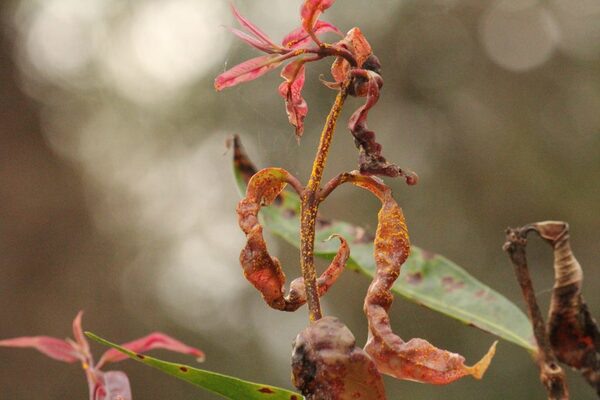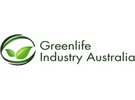Myrtle rust is a fungal disease that threatens the nursery and garden, forestry, and tea tree oil production industries, as well as natural ecosystems. It has the potential to infect almost all plants in the Myrtaceae family, such as gum trees (Eucalyptus), Lilly pilly (Syzygium, Acmena, Waterhouse), tea trees and a bottle brush (Callistemon, Melaleuca), and guava (Psidium). It is caused by the species Austropuccinia psidii (formerly Puccinia psidii, initially identified as Uredo rangelii).

Symptoms are often very striking, causing brown to grey spots, often with a red-purple halo on leaves. A few days after infection, masses of bright yellow or orange-yellow spores (powdery specks) appear on the spot’s surface. It is the only species of rust to cause these bright yellow to orange masses on myrtaceous plants.
All plants in the family Myrtaceae should be proactively managed to prevent myrtle rust and may have movement restrictions in place. For a great deal of information on the management of myrtle rust, refer to the myrtle rust management plan, current minor use permits are available on the APPS website. For more general information on rust, refer to the rust nursery paper and the leaf spot management plan.
If you are uncertain whether you have myrtle rust on your stock plants, send photos or samples to Grow Help Australia; all production nurseries receive 6 free diagnostic samples per year until the end of 2025 through Grow Help Australia through a nursery levy-funded project (NY20000).
For more information:
Greenlife Industry Australia
[email protected]
www.greenlifeindustry.com.au
